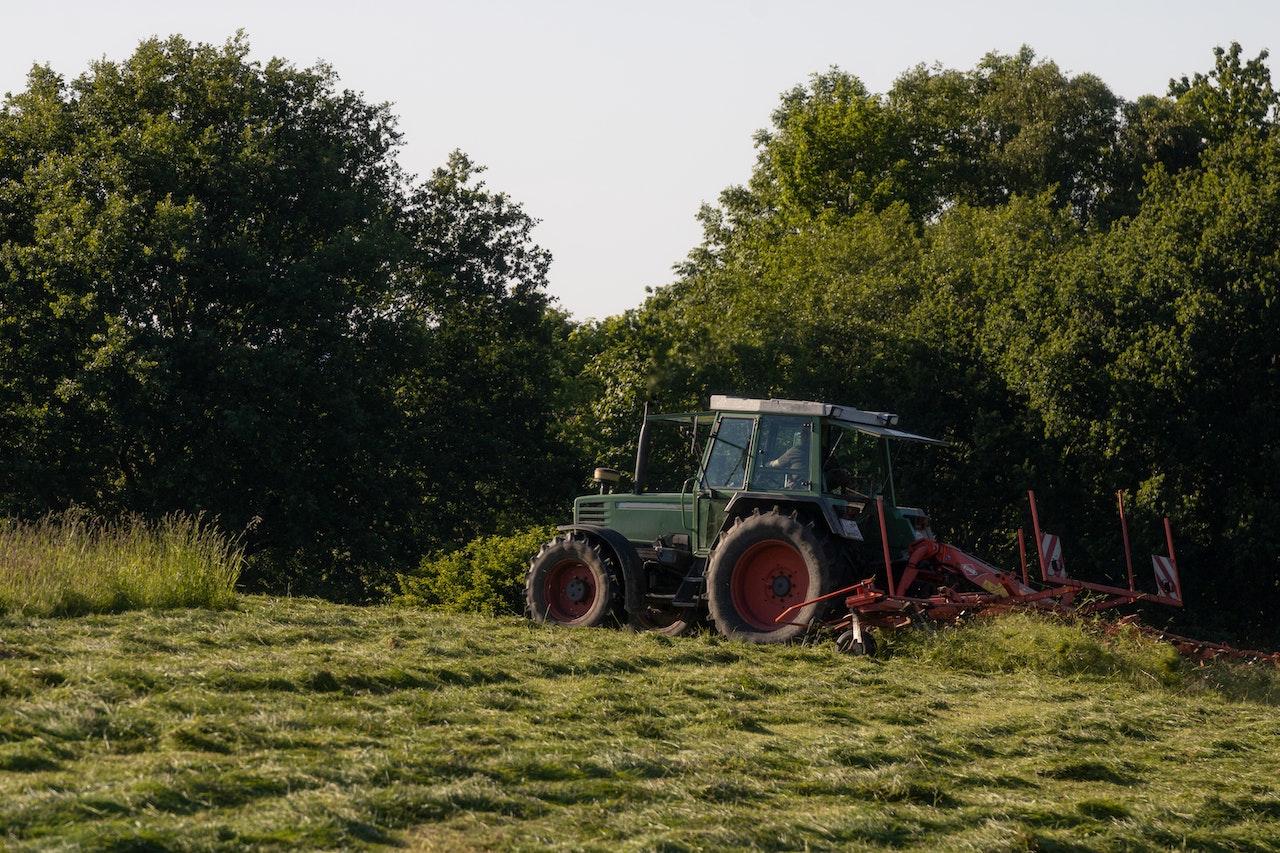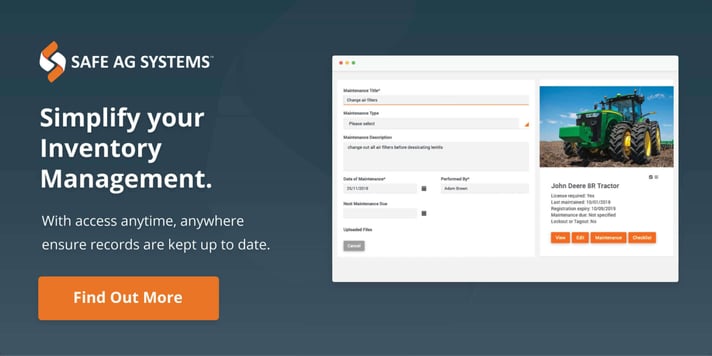Get a copy of our 20+ page resource identifying the biggest risk and hazards surrounding your farm machinery.
Let's be real. Farming is expensive.
Equipment and machinery are costly to buy let alone maintain. A known struggle if you’re a small business owner.
Farmers have been sharing their farm machinery for centuries and why not, it’s an effective way to curb the price rises. Let’s explore the benefits and pitfalls of owning and sharing farm machinery and what you need to know.
To begin with, before you look into adding to your inventory, you need to think about what you are trying to achieve and ask yourself what the best option is for your business. From borrowing, contracting, and hiring machinery, there are options to accommodate everyone.
But proceed with caution. Not every option provides an easy solution that will work for all parties. Some carry more issues than answers, with the potential to cause rifts between your neighbours…
Join a syndicate — All for one and one for all
The usual method of co-op sharing between farms is done by forming a syndicate. Joining a syndicate allows better machinery to be purchased since the cost spreads over every member. While the idea is cost-reducing, it can provide drawbacks:
-
Farmers may require the machinery at the same time
-
Who’s liable for its maintenance costs and issues that arise?
-
How do you figure out an equal share between all members? Is everyone looking after it correctly?
-
Legally it's a bit of a nightmare! Who takes ownership and taxation of the machine on paper? What happens when it's time to sell it but not all members want to part with it?
While on paper a syndicate sounds perfect, it can also lead to a rabbit hole of problems. The last thing you require in a small town is to have discord with your neighbours over equipment.
If the legal requirements and share rights can be sorted out then it may be a plausible idea. Otherwise, it’s better to stick with the other options below.
Borrow and Return it — Simple as that.
Similar to a syndicate, reciprocal borrowing is when farmers purchase and maintain a single piece of machinery. The group then shares each machine as they require.
A good example of this is haymaking. One farmer buys the mower, another the hay rake and the next a baler. As each machine makes its way around everyone's farm, using a contract payment system so no machinery owner is deprived.
Now that you know you’re only liable for one piece of machinery it eases a whole load of pressure. However, it still raises the issue of equal sharing between you and your neighbours.
Is your machine being looked after? Will it be returned on time? Where is the liability if someone breaks the equipment or worse, someone is injured?
Valid questions to know while your machine is in the hands of others. Communicate these questions with your borrowing party before entering an agreement to ease any worries.

Hire a Contractor
Perhaps you’ve decided to not enter a share agreement with your neighbours? Then why not hire a contractor to do the work for you instead?
Hiring a contractor is quite common on farms, and they’re available for a wide range of small and large farming tasks.
Hiring one comes with several advantages:
-
The contractor owns, operates and maintains the machinery — no maintenance costs on your end!
-
Contractors have access to better quality and larger machinery.
-
Standardised contract rates.
-
Hiring a contractor is tax-deductible for business purposes.
Disadvantages? You may not be able to book them for when you need them. With the purpose of their business being to work on everyone's farm, their availability may not suit yours.
So if you need a job done asap or grain harvested within a certain period, they wouldn’t be your best bet.
Despite contractors not being employed under you like your workers, you’re also still required to meet your legal obligations of keeping them safe on farm. Which requires inducting them, relaying any risk and notifying them of your emergency management plan.
Hire equipment — If you want a thing done well, do it yourself.
Waiting on someone to finish a job for you can prove irritating. Hiring the machinery means you’re not relying on others to finish the job. This cuts the costs of hiring a contractor and ensures the job gets done exactly how you wanted.
Downsides? It’s entirely dependent on where you live. Some rural cities may have a machinery hire company, but accessing machinery for hire may not be an option.
Which option do you go with?
There are a lot of variables to consider when opting between farm machinery sharing or owning. Property size, location and costs all come into play when considering what option to choose.
Smaller-sized farms may be better off renting or entering a share agreement with a neighbour, rather than owning. Depending on the property size, contractors may not be an eligible option either. Most prefer doing bigger jobs, meaning smaller farms get looked over.
For much larger farms, owning is the preferred option. However, as we discussed it's not always cost-effective in this current era. Contracting is a notable option but consistency and convenience may be an issue. Especially if you’re more rural. Entering a co-op share agreement like a syndicate or reciprocal borrowing may be the preferred option. It’s the most cost-effective answer and helps out farmers around you who may be in the same boat. The major disadvantage? Holding everyone accountable in the share agreement.
What are the Top 10 things to consider?
Remember how we mentioned co-op machinery sharing can be a bit of a legal mess at times? To prevent yourself from getting into strife legally or with any farmers you share machinery with, assure you know your rights and everything is documented in a signed contract between everyone.
Things to consider when entering a sharing agreement:
-
Consider a list of rules for the usage and maintenance schedule of the machinery
-
Record keeping of all Financials related to the machinery and what costs are required from members
-
Consider how the scheduling of using the machinery will work between members
-
How will maintenance records be kept up to date? – Some members may carry out the maintenance work themselves yet not record it. Others may not do it at all and you’d unknowingly be left with a faulty machine that could be considered a hazard.
-
Have a Pre-Start Checklist for the machinery – Ensure all members are inspecting it for any issues and that everyone completes it.
-
Members are to record the date, time and any kilometres/miles done in the machine if applicable.
-
When not in use, where is the machine or equipment stored?
-
Classify clear expectations for use – maintenance, hygiene, transport, scheduling, and insurance with policies and procedures.
-
Insurance – is the machinery covered? Does that insurance cover everyone in the agreement to drive it or only specific members?
Consider some of these elements as clauses when drafting the co-op contract. When in doubt, contact a lawyer if you’re unsure if all parties will have equal rights to the machinery. They’ll be able to draft up a fair and concise contract with all the clauses considered.
Sharing farm machinery is a great method of lowering machinery costs but still getting the job done regardless. With an arrangement of options to choose from, your next piece of farm machinery could be from a share agreement.
Topics: Machinery Maintenance
Disclaimer: Content on this website may be of relevance to users outside of Australia, but content links and examples are specific to Australia. Please check with your local authority for your country and industry requirements.












